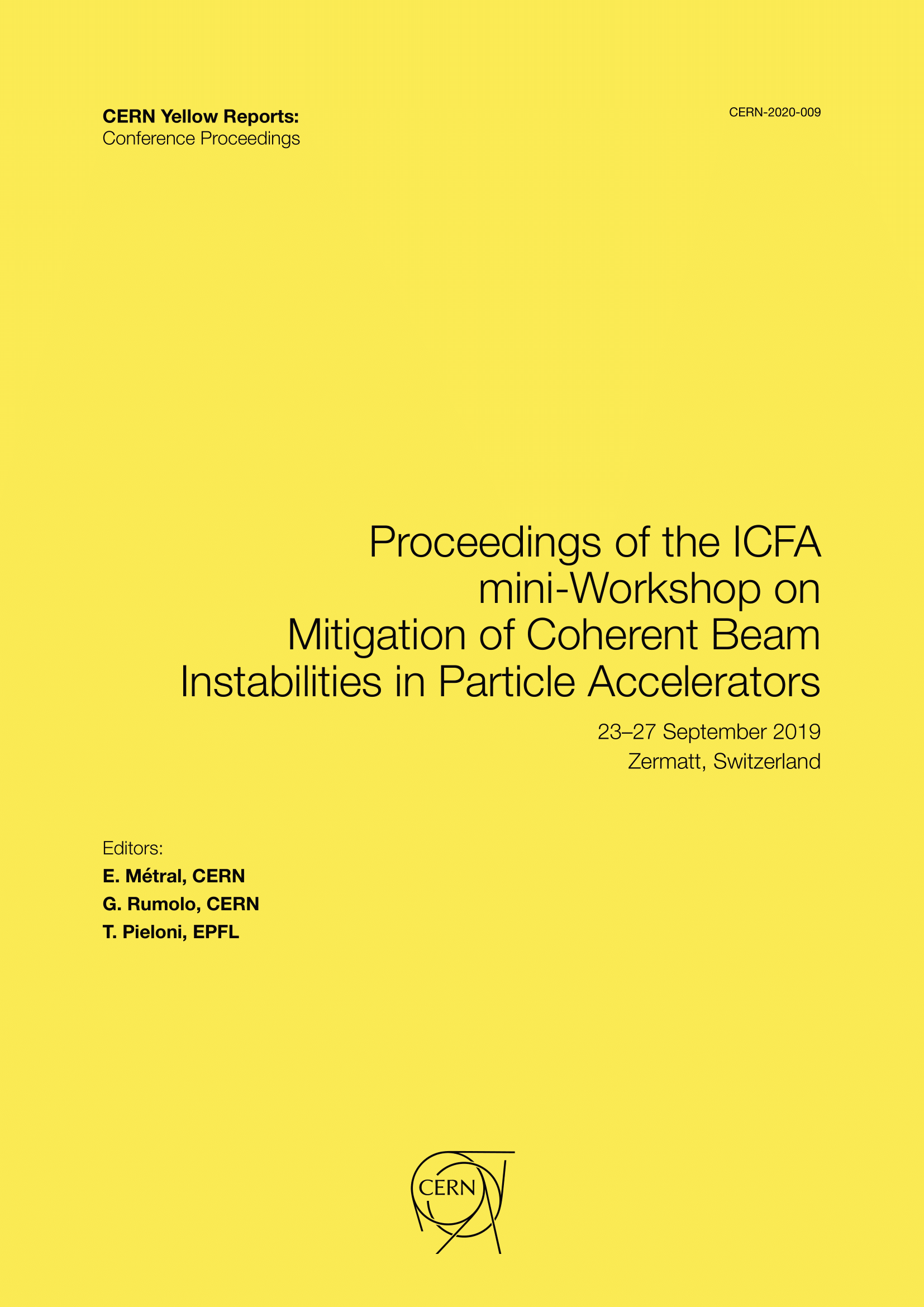Suppression of the longitudinal coupled bunch instability in DAΦNE in collision with a crossing angle
DOI:
https://doi.org/10.23732/CYRCP-2020-009.101Abstract
In DAΦNE, the Frascati e+/e– collider operating since 1998, an innovative collision scheme, the crab waist, has been successfully implemented during the years 2008–09. During operations for the Siddharta experiment an unusual synchrotron oscillation damping effect induced by beam-beam collisions has been observed. Indeed, when the longitudinal feedback is off, the positron beam becomes unstable with currents above 200–300 mA due to coupled bunch instability. The longitudinal instability is damped by colliding the positron beam with a high current electron beam (of the order of 2 A). A shift of about –600 Hz in the residual synchrotron sidebands is observed. Precise measurements have been performed by using both a commercial spectrum analyzer and the diagnostic capabilities of the longitudinal bunch-by-bunch feedback. The damping effect has been observed in DAΦNE for the first time during collisions with the crab waist scheme. Our explanation, based both on theoretical consideration and modelling simulation, is that beam collisions with a large crossing angle produce longitudinal tune shift and spread, providing Landau damping of synchrotron oscillations.
Downloads
Published
Issue
Section
License
Copyright (c) 2021 CERN

This work is licensed under a Creative Commons Attribution 4.0 International License.
Authors who publish with this publication agree to the following terms:
- CERN retains copyright and publishes the work licensed under the Creative Commons Attribution License 4.0 that allows others to share the work with an acknowledgement of the work's authorship and initial publication in this series.
- Authors are able to enter into separate, additional contractual arrangements for distribution of the published version of the work (e.g., post it to an institutional repository or publish it in a book), with an acknowledgement of its initial publication in this series.
- Authors are permitted and encouraged to post their work online (e.g., in institutional repositories or on their website) prior to and during the submission process, as it can lead to productive exchanges, as well as earlier and greater citation of published work (See The Effect of Open Access).

